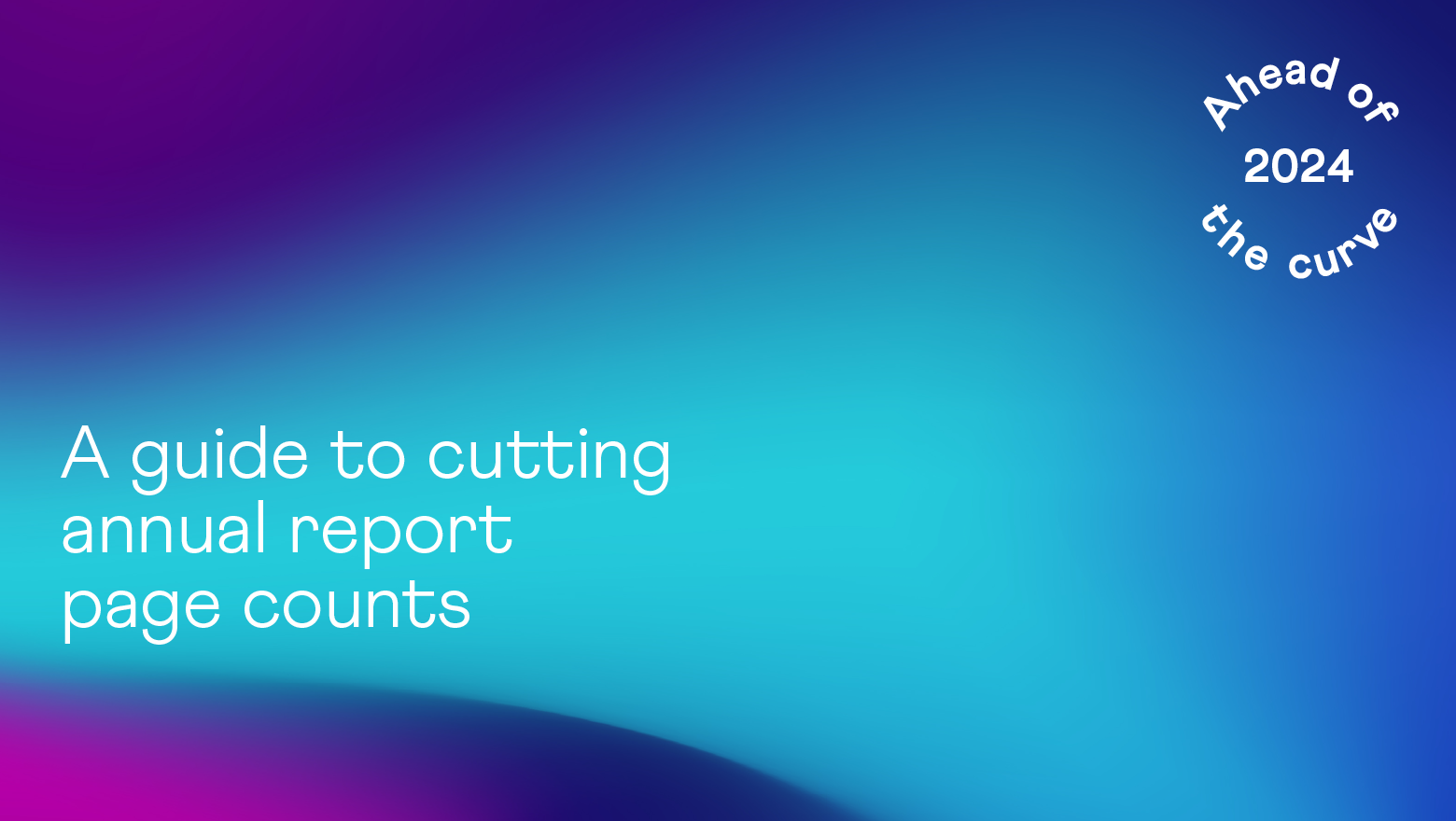
...the average annual report grows by nearly eight pages every year. And with even more regulations in the pipeline, this trend is only expected to increase.
Stay informed with regulations, insights & events by joining our mailer
In recent years, reporting companies have faced a wave of regulations which has drastically increased the size of annual reports. As a result, the average annual report grows by nearly eight pages every year.
And with even more regulations in the pipeline, this trend is only expected to increase. Not only does this create an extra burden for reporting companies, but the expanding length of reports can make information inaccessible and overwhelming for investors. Recognising this concern, our clients frequently seek advice on how to streamline their reports, prompting us to explore efficient ways to reduce page counts without compromising their effectiveness.
Annual reports as hybrid documents
In our digital age, it's high time we rethink how we approach annual reports. Think of them as hybrid documents that act as a gateway to a wealth of digital content. Adopting a "digital-first" mindset and optimising the website as a content hub can streamline the annual report. The challenge, however, lies in deciding what should make the online cut:
Consistent content
Products and services
Company history
Case studies
Understanding the needs of your audience
Effectively communicating the company's equity story is the ultimate goal of the annual report. Therefore, focus content on company-specific information, steering clear of boilerplate content that could be a match for any organisation. Material and relevance should guide the narrative, ensuring that your report speaks to what genuinely matters to your corporate story, rather than following peer trends.
Clarify your audience, tailor your content to their interests, and align with their priorities. This not only hones your narrative but ensures your report resonates with what truly matters to your readers.
Repetition can be a main culprit for increasing the size of annual reports. And while it is important to stress key messages, this can sometimes lead to duplication. The way we tend to avoid this when working with our clients is by being strategic about the structure of the report. The order of content can be a narrative tool, guiding readers through your equity story, and by including linkages and page drivers, connectivity between key sections of the report can be demonstrated without repeating content.
Another way to demonstrate alignment without resorting to repetition is to develop a “strategic roadmap”. This tool sits at the front of the report and visually connects key elements into a single framework, namely purpose, vision, strategy, values and sustainability strategy. Not only does the framework act as a guide to the report, but it can also limit page counts by consolidating competing frameworks into one roadmap. Additionally, “strategic roadmaps” can be an asset to report contributors by helping them to assess whether their content aligns with the framework and if it doesn’t, decide whether the content is material to the report or if it should be moved online.
Don’t overlook the importance of the review stage
While it might seem obvious, invest time in reviewing the annual report to streamline content and avoid duplication. This is particularly important in sections like the leadership statements as the chair and CEO statements might inadvertently echo each other and repeat content from other sections of the report. The review stage helps to ensure that all content is material and relevant to the reporting year.
The importance of effective design
In an effort to trim page counts, it might be tempting to ditch design and infographics. However, it's essential to recognise their dual role in not just adorning but simplifying information. Visual elements wield the power to untangle complexity, transforming data into digestible insights. Striking a balance is key – don't sacrifice accessibility and engagement in the pursuit of a leaner report.
Design plays an important role in streamlining reports. Key sections of the report, including the market review, strategy and stakeholder engagement spreads, can benefit from design elements to help signpost the key information and prevent these sections from running over multiple spreads. By incorporating tables, infographics and sub-headings, you can ensure that content is material and accessible to skim readers.
Additionally, leadership statements and operational reviews can be structured in the form of a Q&A. This helps to directly address any investors' questions or topics of interest, as well as limit the amount of content.
The digital era has reshaped how reports are consumed, with an increasing number of eyes scanning screens instead of printed pages. This shift has prompted some companies to embrace landscape-oriented reports, a format tailor-made for laptop screens. While this adjustment might increase the page count, the payoff is a report that aligns seamlessly with the digital reader's experience. Embracing this change not only enhances accessibility but opens doors to interactive elements like hyperlinks, video and QR codes, creating a richer and more engaging journey for the audience. So, in the grand scheme of things, it's not just about cutting pages, it's about enhancing the reader's experience in the digital realm.
Conclusion
In conclusion, the journey to reduce the page count is not solely about shedding pages but rather about optimising the report's content, structure and format to ensure all content is material and resonates with today's readers.
By embracing these strategies, companies can not only meet regulatory requirements but also transform annual reports into dynamic, accessible and engaging documents that captivate stakeholders in our ever-evolving digital age. By taking a focused approach, you’ll find that the page count naturally rolls back.